How to choose the right walking shoes
Feet are remarkably adaptable and resilient, capable of withstanding substantial pressure and strain. However, if you frequently walk or hike, choosing the right footwear is essential to avoid discomfort, injury, or long-term damage. A well-fitting pair of hiking boots not only keeps your feet comfortable but also provides the support and protection necessary for different terrains and weather conditions. This guide will help you select the perfect hiking boots for your needs, ensuring your adventures are both enjoyable and safe.

Importance of proper fit
A good fit is the cornerstone of any hiking boot. Ill-fitting boots can lead to blisters, bruised toenails, and foot fatigue, all of which can spoil your hike. Here’s what to consider when finding the right fit:
- Try before you buy: Always try on hiking boots in the afternoon or evening, as feet tend to swell during the day. Bring along the socks you plan to wear on your hikes, as thicker socks can significantly affect the fit.
- Room for movement: Your toes should have enough room to wiggle freely but not so much that your foot slides forward, especially when walking downhill. Aim for about a thumb’s width of space between your toes and the front of the boot.
- Heel lock: The heel should fit snugly in the boot to prevent lifting, which can cause blisters. Lace-up fastenings act like a “seat belt” for your foot, keeping it securely in place.
Upper material: leather vs synthetic
The material of your hiking boot significantly impacts its durability, comfort, and performance. There are two main types of uppers to consider:
- Leather uppers:
Leather is a classic choice for hiking boots due to its durability and ability to mould to the shape of your feet over time. It is also breathable, allowing moisture to escape, which helps prevent sweaty, uncomfortable feet.- Full-Grain Leather: Offers excellent water resistance and durability, ideal for rugged terrain and multi-day hikes.
- Nubuck Leather: Softer and more flexible, making it a great choice for lighter trails or day hikes.
- Synthetic uppers:
Modern hiking boots often use synthetic materials like nylon or polyester. These are lighter than leather, quick-drying, and often less expensive. However, they may not last as long or provide the same level of water resistance.
Outsoles and grip
The outsole is the part of the boot that comes into direct contact with the ground. A quality sole ensures proper grip and stability, especially on uneven or slippery surfaces.
- Tread pattern: Look for deep lugs (the patterns on the sole) that offer a strong grip on mud, loose gravel, and wet rocks.
- Material: Most hiking boots use rubber soles, sometimes reinforced with carbon for extra durability.
- Flexibility: For more technical hikes, stiffer soles provide better support on rocky terrain, while flexible soles are suitable for flat or even trails.
Midsole and cushioning
The midsole provides cushioning and support, protecting your feet from the impact of rough terrain. There are two common types of midsoles:
- EVA (Ethylene Vinyl Acetate): Lightweight, soft, and cushioned, ideal for casual or shorter hikes.
- PU (Polyurethane): Firmer and more durable, making it suitable for longer or more challenging hikes.
Waterproofing and breathability
The UK’s unpredictable weather makes waterproof hiking boots a smart choice for many walkers. However, it’s equally important that your boots are breathable to prevent your feet from becoming sweaty and uncomfortable.
- Waterproof linings: Many hiking boots feature a Gore-Tex or similar membrane that keeps water out while allowing moisture to escape.
- Treatment: Some boots require occasional reproofing to maintain their waterproofing, so check the manufacturer’s care instructions.

Inner lining and comfort
The lining of your hiking boot plays a key role in comfort. Choose boots with a smooth, seamless interior to avoid irritation and blisters. Avoid models with thick, intrusive stitching inside the boot.
Weight
Heavy boots provide more support and durability, but they can tire you out more quickly. Lightweight boots are easier to walk in but may lack the sturdiness needed for difficult terrain. Consider the type of hiking you’ll be doing most frequently when deciding on weight.
Ankle support
Hiking boots come in various cuts to provide different levels of ankle support:
- Low-Cut: Similar to trainers, these are suitable for easy trails and short hikes.
- Mid-Cut: Offers some ankle support and protection from debris, ideal for moderate trails.
- High-Cut: Provides excellent ankle support and stability, perfect for challenging terrain or carrying heavy loads.
Socks matter too
Your choice of socks can make a significant difference in comfort and blister prevention. Opt for moisture-wicking hiking socks made from wool or synthetic materials, and avoid cotton, which retains moisture and can cause chafing. Learn more about socks here.
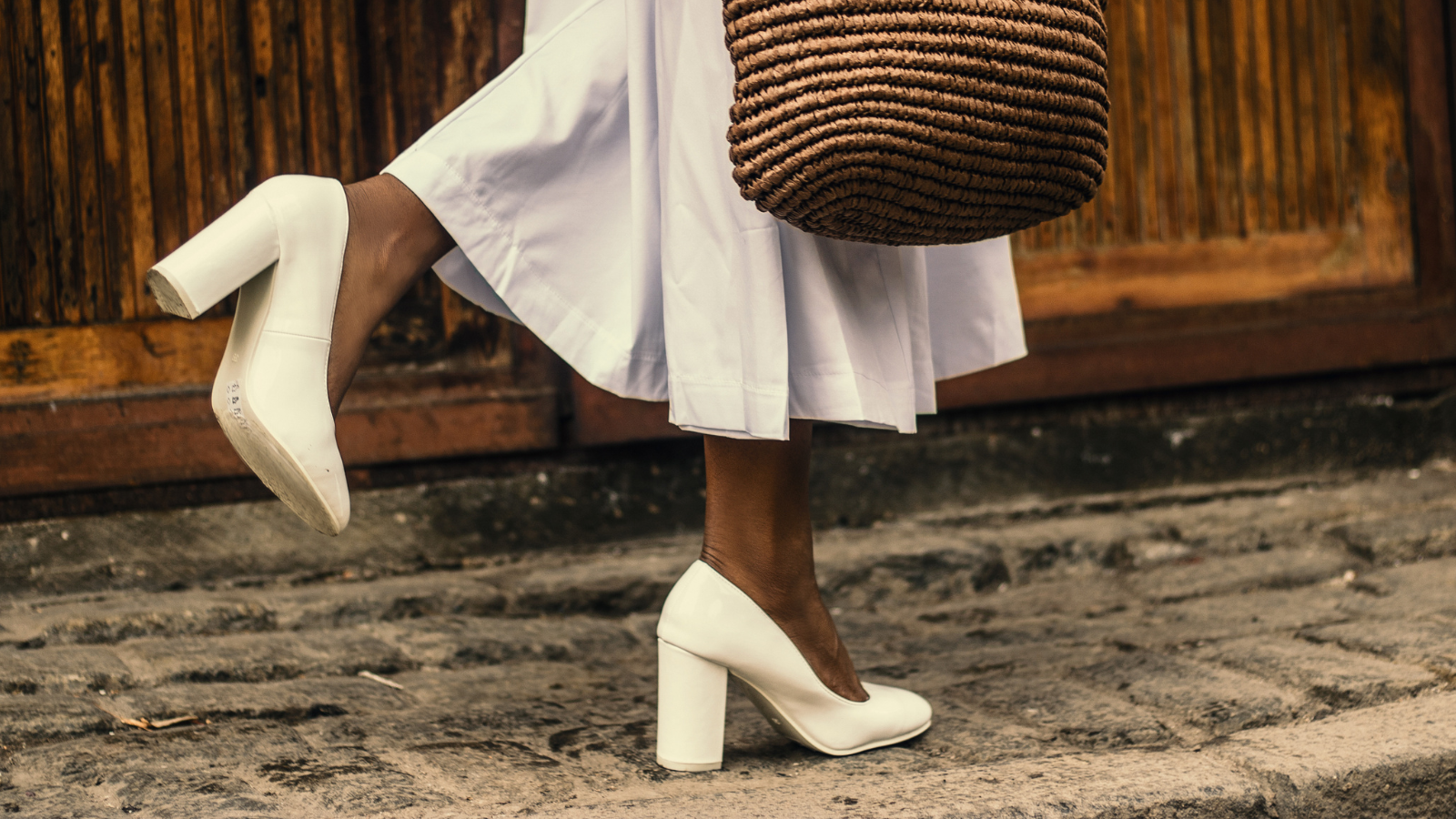
Try them out
Before committing to a pair of hiking boots, walk around the store, test them on inclines or steps, and mimic the movements you’d make on a hike. Many outdoor retailers offer in-store terrain simulators for this purpose.
Don’t forget aftercare
To prolong the life of your hiking boots, clean them after every hike and allow them to dry naturally. Apply waterproofing treatments as needed and store them in a cool, dry place.
Seek expert advice
If you’re unsure which boots are best for you, visit a specialist outdoor retailer. They can measure your feet, assess your needs, and recommend suitable options. For more advice on foot care and walking, visit the College of Podiatry’s Feet for Life website.
Choosing the right hiking boots is an investment in your comfort and safety. By taking the time to consider factors like fit, materials, and intended use, you’ll find a pair that supports your adventures for years to come. Happy hiking!
High heels can be a stylish addition to your wardrobe, but they often come at a cost to your foot health. We often see the consequences of prolonged high heel use—everything from blisters and bunions to long-term issues like joint pain and tendon problems. However, with a few adjustments and mindful choices, you can wear heels more comfortably and reduce the risk of damage. Here’s my advice for stepping out in heels safely and stylishly.
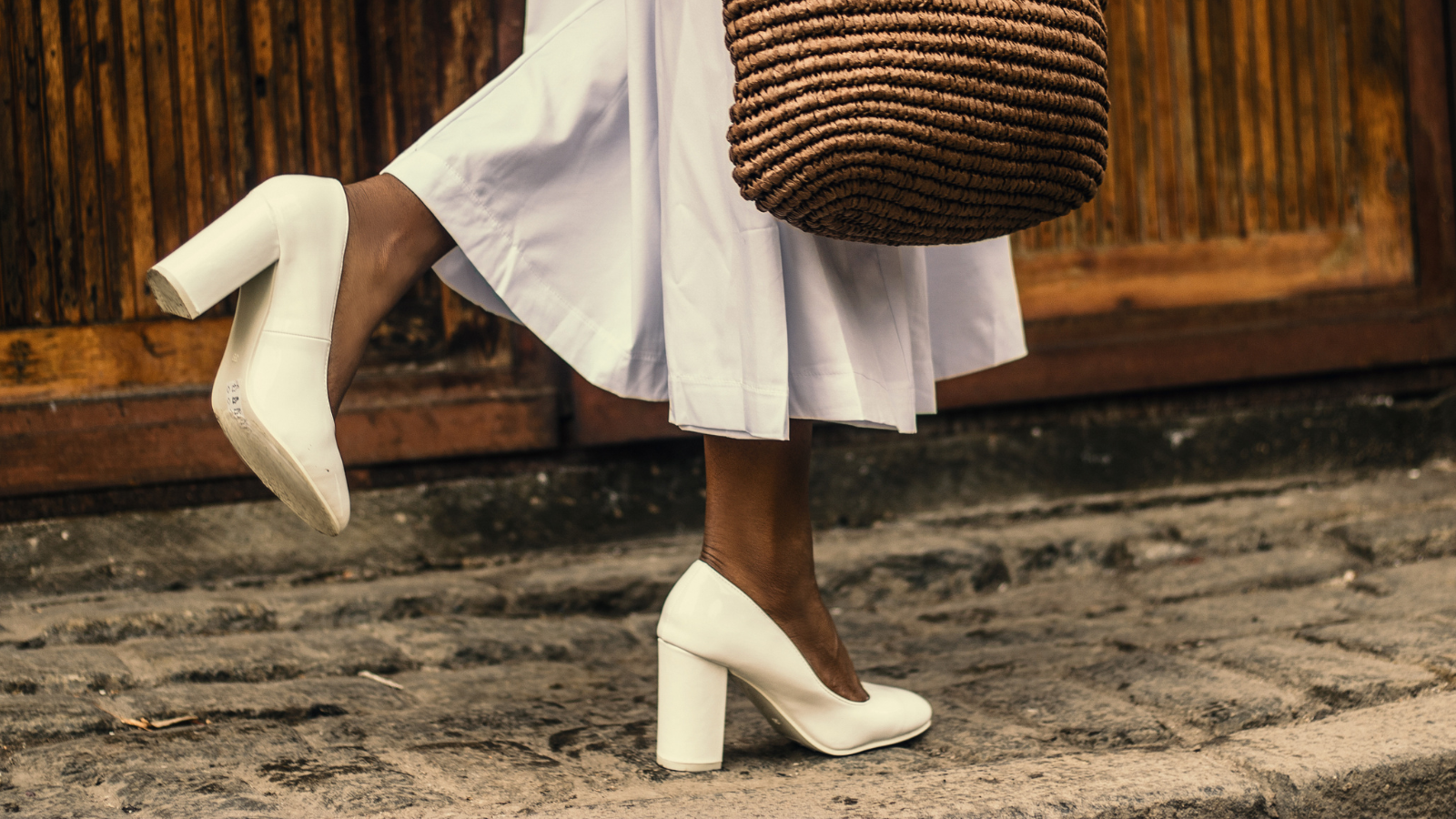
1. Choose the Right Heel
Not all heels are created equal. Opting for a more foot-friendly design can make a significant difference.
Height Matters: stick to heels no higher than 2-3 inches for regular wear. The higher the heel, the greater the pressure on the ball of your foot and toes.
Chunky or Block Heels: Wider heels distribute your weight more evenly and provide better stability than narrow stilettos.
Platform Soles: A small platform can reduce the effective height of the heel and lessen the strain on your foot.
2. Prioritise Proper Fit
Ill-fitting heels can cause pain and long-term problems. Here’s what to look for:
Room for Toes: Avoid pointed or narrow toe boxes that pinch your toes. Rounded or almond-shaped designs are more forgiving.
Snug Fit: Your heels should fit snugly to prevent your foot from sliding forward. This reduces pressure on the ball of the foot and prevents blisters.
Try Them On: Always try heels on in the afternoon or evening when your feet are naturally more swollen.
3. Invest in Quality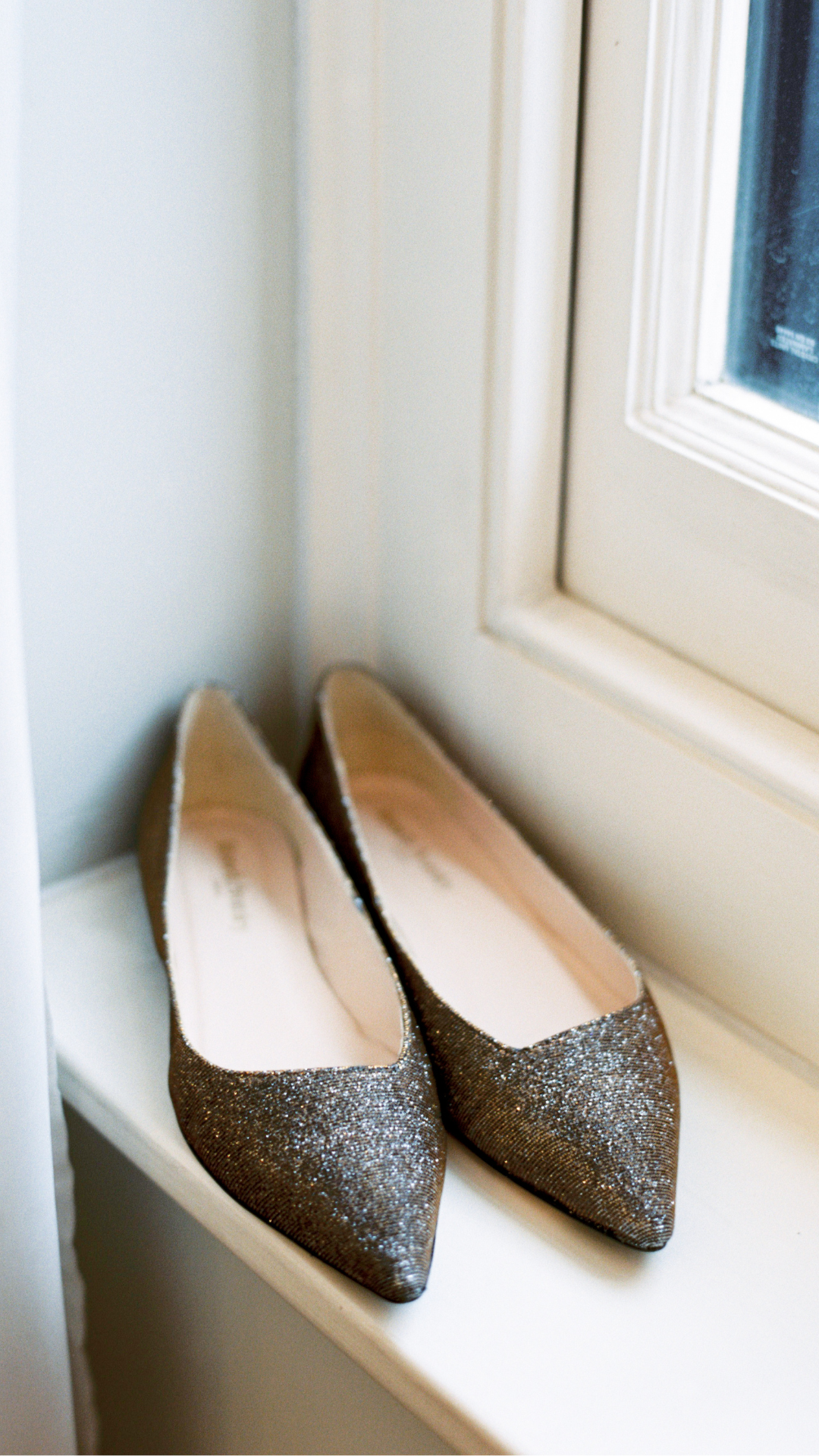
Cheap high heels might be tempting, but investing in a well-made pair can protect your feet. Look for features like:
Cushioned Insoles: Padding in the ball of the foot and arch areas provides much-needed support.
Stable Construction: Quality materials and sturdy soles improve balance and reduce the risk of ankle injuries.
Breathable Linings: Leather or other breathable materials help prevent excessive sweating and reduce the risk of irritation.
4. Limit Your Time in Heels
Even the best-designed heels can put strain on your feet if worn for extended periods.
Save Them for Special Occasions: Avoid wearing heels all day, every day. Reserve them for events or short outings.
Take Breaks: If you’re out for an extended period, bring a pair of flats or comfortable shoes to switch into.
5. Strengthen and Stretch Your Feet
Regular foot exercises can help counteract the strain caused by wearing heels.
Toe Stretches: Stretch your toes by spreading them apart and holding the stretch for a few seconds.
Calf Raises: Strengthen your calves by lifting your heels off the ground while standing.
Roll a Ball Underfoot: Use a small ball (like a tennis ball) to massage and stretch the arch of your foot.
6. Use Accessories for Comfort
Small accessories can make a big difference in comfort and support.
Gel Inserts: Cushioned gel pads or insoles can reduce pressure on the ball of your foot.
Heel Grips: Prevent blisters and keep your heels from slipping out of the shoe.
Moleskin or Blister Pads: Apply these to potential problem areas before wearing your heels.
7. Know the Risks of Frequent High Heel Use
Wearing high heels regularly can lead to various foot problems, including:
Bunions: These painful bumps can develop from pressure on the big toe joint, especially in tight, pointed heels.
Hammer Toes: High heels can cause toes to bend abnormally, leading to discomfort and deformities.
Plantar Fasciitis: The lack of arch support in many heels can strain the plantar fascia, causing heel pain.
Achilles Tendon Issues: Wearing heels shortens the Achilles tendon over time, leading to stiffness and discomfort when switching to flat shoes.
Understanding these risks can help you make more informed choices about your footwear.
8. Recovery After Wearing Heels
After a day or night in heels, take steps to soothe and recover your feet.
Soak Your Feet: A warm Epsom salt bath can relieve tension and reduce swelling.
Massage: Use your hands or a massage tool to gently work out any knots or tension in your feet and calves.
Stretch: Stretch your toes, arches, and calves to counteract the effects of being in heels.
9. Consider Lower Heel Alternatives
If you love the look of heels but hate the pain, consider alternatives like:
Kitten Heels: These provide a small lift without the intense pressure of higher heels.
Wedge Heels: These distribute weight more evenly, offering better support and stability.
Dressy Flats: Elegant flats can be just as stylish and much kinder to your feet.
10. Know When to Seek Help
If you experience persistent foot pain, numbness, or deformities, it’s time to see a podiatrist. Prolonged issues can lead to chronic problems if not addressed. We can assess your foot health and provide advice or treatments to prevent further damage. Get in touch.
High heels don’t have to spell disaster for your feet, but moderation and smart choices are key. Invest in well-fitting, quality shoes, take breaks, and prioritise foot care to enjoy your heels without compromising your health. Remember, looking good doesn’t have to hurt!
If you have any questions or concerns about your foot health, don’t hesitate to book an appointment us. Your feet deserve the best care.
Back to top
What to Look for When Checking Your Child’s Feet
Regularly examining your child’s feet is essential to ensure they are healthy and developing correctly. Children’s feet grow and change rapidly, and identifying potential issues early can prevent long-term problems. Here are the key things to watch for when inspecting your child’s feet, along with advice on what to do if you spot anything unusual.
- Redness or irritation
- Blisters, corns, or calluses
- Toe deformities
- Unusual toenails
- Skin conditions
- Flat feet or high arches
- Pain or tenderness
- Unusual gait or posture
- Swelling or lumps
- Odour or excessive sweating
- Uneven shoe wear
How to Choose the Right Shoes for Your Children
Children’s feet grow rapidly, and ensuring they have properly fitted shoes is crucial for their foot health and overall development. Poorly fitting shoes can lead to discomfort, irritation, and even long-term foot problems. As podiatrists, we see many cases where incorrect footwear during childhood has caused lasting issues, which could have been easily prevented. Follow these tips to choose the right shoes for your child and support their growing feet.

1. Importance of Proper Fit
Having your child’s shoes correctly fitted is essential to prevent problems like blisters, bunions, or structural issues in later life. Children may not always notice or communicate that their shoes are too tight, so regular checks are essential. Here's what to keep in mind:
- Leave Growing Room: Ensure there’s about 18mm (2/3 inch) of space between the end of their longest toe and the front of the shoe. This allows for natural foot movement and growth.
- Secure Fit: Shoes must fit firmly at the heel and have fastenings, such as Velcro, laces, or straps, to hold the foot securely in place.
- Avoid Loose or Tight Shoes: Shoes that are too loose can cause instability, while tight shoes can lead to redness, irritation, or deformities over time.
2. Look for Signs of Problems
Regularly inspect your child’s feet for any signs of issues that could be linked to poorly fitting shoes:
- Redness or Irritation: Check for areas of redness, rubbing, or soreness, particularly around the toes, heels, or sides of the feet.
- Toe Overcrowding: Make sure the toes are not scrunched or overlapping when your child is wearing shoes.
- Foot Pain: If your child complains of pain or discomfort, don’t dismiss it. Check their shoes immediately and consult a podiatrist if needed.
3. Have Shoes Professionally Fitted
Whenever possible, purchase your child’s shoes from a specialist children’s shoe shop where a trained shoe fitter can assist you. These professionals measure both the length and width of the foot to ensure the best fit.
- Expert Guidance: A trained shoe fitter can also advise whether your child needs new shoes or how much wear they can still get from their current pair.

4. What to Look for in Children’s Shoes
When choosing shoes for your child, focus on the following features to ensure optimal comfort and support:
Fit and Fastening
-
Shoes should have a secure fastening, such as laces, Velcro, or buckles, to keep the foot in place and prevent slipping.
-
Ensure the shoes fit snugly at the heel without pinching or leaving gaps.
Flexible and Supportive Soles
-
Look for shoes with flexible soles that allow the foot to move naturally but are firm enough to provide stability.
-
Avoid overly stiff soles, as these can restrict natural foot movement.
Breathable Materials
-
Choose shoes made of breathable materials like leather or mesh, which help prevent sweating and irritation.
-
Avoid synthetic materials that trap heat and moisture, increasing the risk of fungal infections.
Toe Space
-
Ensure the toe box is roomy enough to allow the toes to move freely without being cramped.
-
Avoid pointed or narrow-toed shoes, which can lead to deformities like bunions or ingrown toenails.
5. Regularly Check Shoe Size
Children’s feet grow quickly, and their shoe size can change every few months. Regularly measure their feet to ensure their shoes are still the right size.
- Growth Spurts: On average, children’s feet grow about two sizes a year in their first four years and then one size a year after that.
- Frequent Checks: Check the fit of their shoes every 6–8 weeks for toddlers and every 3–4 months for older children.
6. Allow Time for Adjustments
New shoes may take some time to break in. Let your child wear their new shoes for short periods initially to ensure they’re comfortable. Monitor for any signs of irritation or discomfort during this adjustment period.
7. Sports and School Shoes
Children often spend long hours in school or playing sports, so their footwear for these activities needs special attention.
- School Shoes: Choose sturdy, supportive shoes with cushioning to handle long hours of wear. Black leather shoes are often required, so ensure they meet school guidelines while providing proper support.
- Sports Shoes: For physical activities, invest in well-fitting trainers or sports shoes with appropriate support for running or jumping.
8. When to Seek Help
Sometimes, foot problems in children may not be caused by their shoes but by underlying issues. Watch out for these warning signs:
- Persistent foot or leg pain
- Visible deformities or unusual foot shapes
- Uneven wear on their shoes
If you notice any of these, or if your child frequently complains about discomfort, consult a podiatrist. Early intervention can prevent problems from worsening.
9. Set a Good Example
Encourage healthy foot habits by choosing well-fitted, supportive footwear for yourself. Children often mimic their parents, so wearing appropriate shoes sets a good example for them to follow.

Properly fitting shoes are an investment in your child’s long-term foot health. They prevent unnecessary discomfort, support healthy development, and reduce the risk of problems in adulthood. Don’t hesitate to reach out to a podiatrist for advice or to address any concerns you have about your child’s feet.For more information on foot care and children’s footwear, get in touch.
Remember, happy feet make happy kids!
Choosing the best shoes
Poorly fitting shoes are one of the leading causes of foot problems, from minor discomfort to chronic pain and deformities. Ensuring your shoes fit properly and provide the right support is essential for maintaining foot health, preventing injury, and improving overall comfort. Whether you're buying shoes for work, exercise, or casual wear, following these guidelines can help you choose the best footwear for your needs.
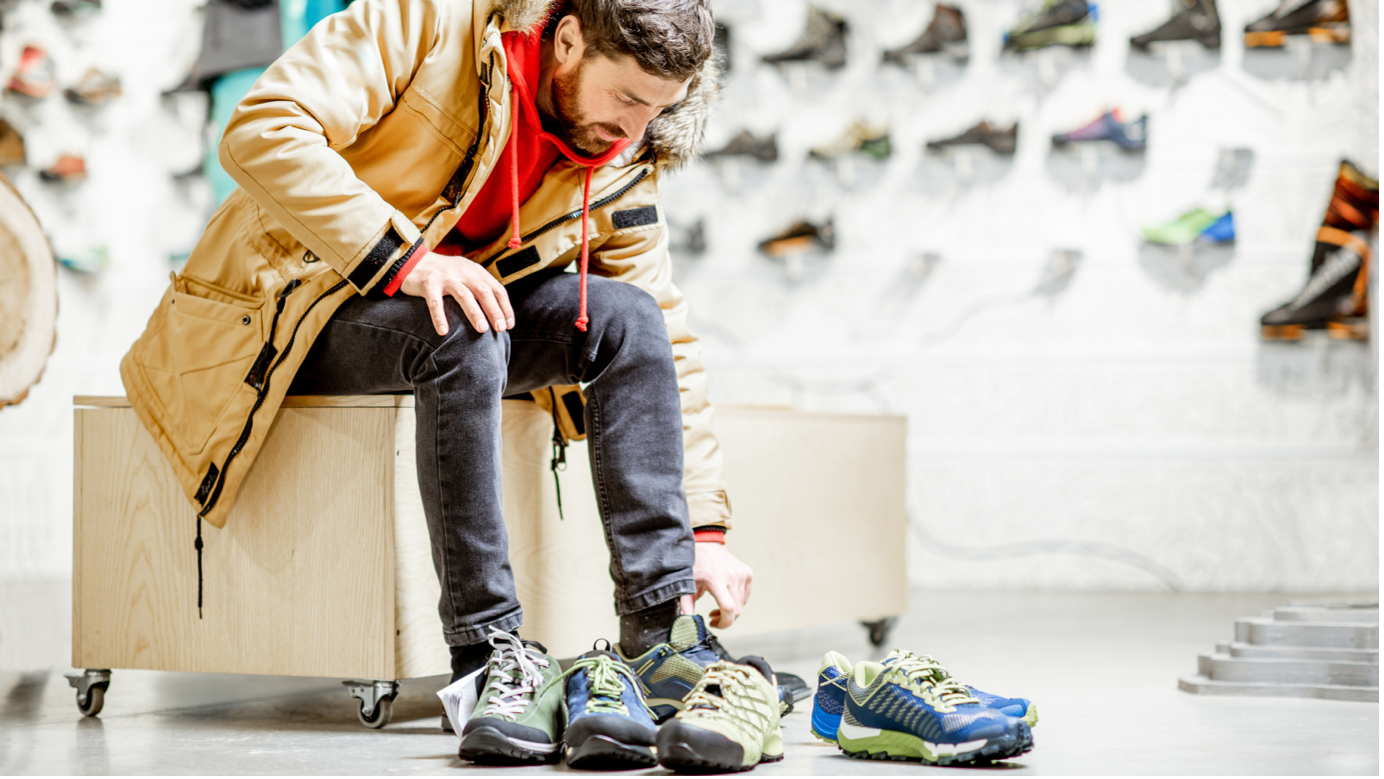
What to look for in a shoe
1. Heel
The heel is critical for balance and stability. Choose a shoe with:
- Broad base: Offers better support and reduces the risk of ankle sprains.
- Moderate height: Heels should be no greater than 4cm (1.5 inches) to avoid excessive pressure on the forefoot and strain on the Achilles tendon.
2. Heel counter
The heel counter is the stiff part at the back of the shoe that helps hold your heel in place.
- Reinforces the heel cup to provide stability.
- Prevents excessive movement of the foot within the shoe, reducing the risk of blisters and overuse injuries.
3. Sole
The sole is your foot’s first line of defence against impact. Look for:
- Cushioning: Absorbs shock during walking or running to reduce strain on joints.
- Grip: Provides traction to prevent slips and falls.
- Flexibility: Should bend at the ball of the foot but remain firm in the arch area for proper support.
4. Upper
The upper part of the shoe should:
- Be made from natural or breathable materials like leather or mesh to keep feet cool and prevent excess moisture.
- Fit snugly without tightness or pinching.
5. Linings
Inner linings contribute to overall comfort.
- Breathable and smooth linings prevent irritation and keep feet fresh.
- Look for seam-free linings to reduce the risk of blisters and rubbing.
6. Fastenings
Shoes with secure fastenings help keep your foot stable.
- Opt for laces, buckles, or touch fastenings (like Velcro) to hold your foot in place and reduce unnecessary movement inside the shoe.
7. Toe box
The toe box is crucial for comfort and preventing foot deformities.
- Ensure there’s enough depth to prevent rubbing on the tops of toes.
- Choose shoes with enough width to allow your toes to wiggle freely, avoiding conditions like bunions and hammertoes.
8. Insole
A good insole adds comfort and adaptability.
- Look for removable insoles that can accommodate orthotics or padding.
- Insoles should provide arch support and cushioning tailored to your needs.
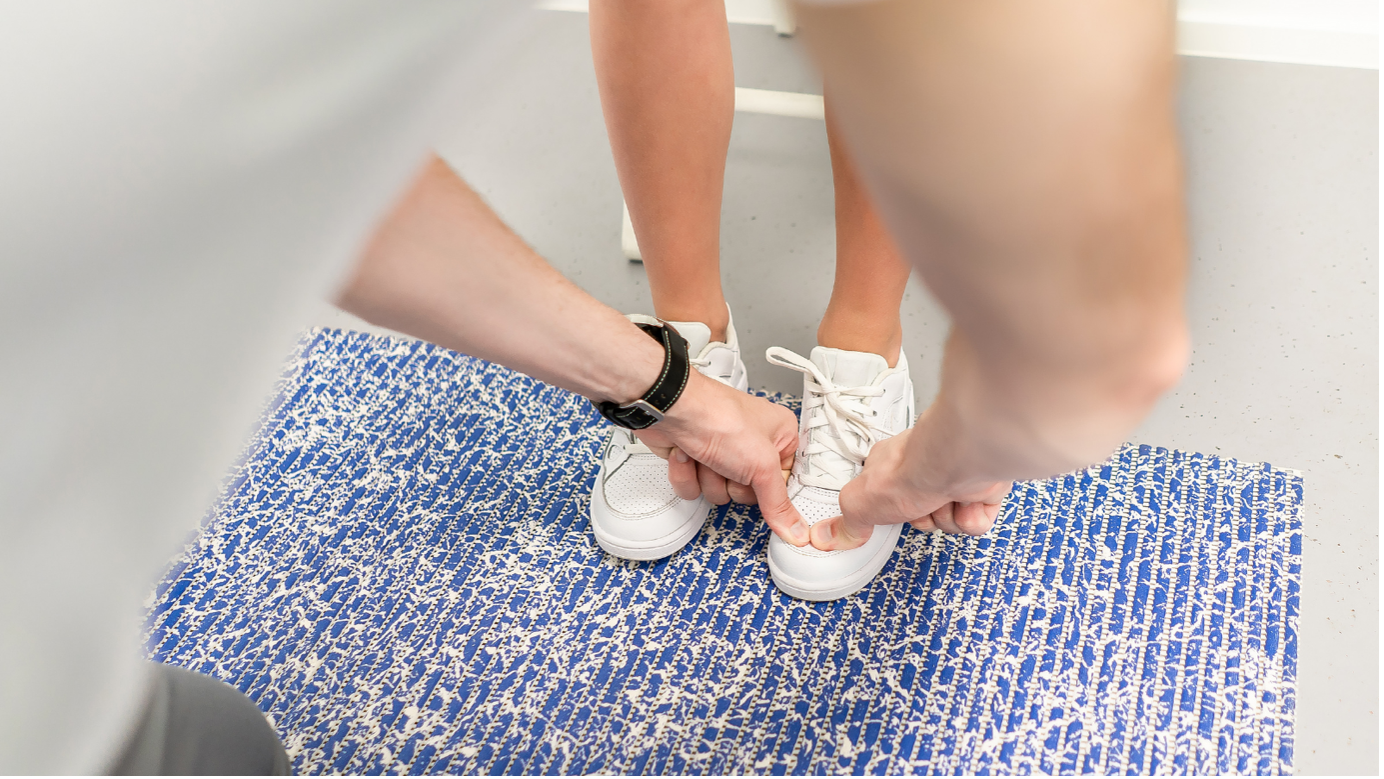
The three essentials for proper shoe fit
1. Foot size
Your foot size can change over time due to factors like aging, pregnancy, or weight changes. A proper fit is critical for preventing foot pain.
- Always measure both feet, as one foot is often slightly larger than the other.
- Fit shoes to the larger foot for optimal comfort.
- Ensure there’s about a thumb’s width of space between your longest toe and the end of the shoe.
2. Arch type
Identifying your arch type—low, medium, or high—is crucial for choosing the right shoes.
- Flat Feet (low arches): Look for shoes with structured arch support to prevent overpronation and reduce strain.
- Neutral arches: Opt for shoes with moderate cushioning and arch support.
- High arches: Choose footwear with extra cushioning to absorb shock and prevent excessive pressure on the ball and heel of the foot.
- Consider a gait assessment with a us to determine your arch type accurately.
3. Pressure points
Pressure points can cause discomfort and lead to calluses or corns if ignored.
- Use orthotics or padded insoles to relieve pressure on specific areas.
Shoes with customisation options, like Aetrex footwear with Mozaic Customization, allow you to adjust pressure points for maximum comfort.
Specialised footwear options
At Essex Footcare we stock premium footwear brands like Aetrex, DB Widerfit, Fidelio, Sole UK, and Vionic. These brands offer:
- Multiple widths to accommodate different foot shapes.
- Advanced cushioning and arch support for various conditions.
- Stylish designs that prioritise both function and appearance.
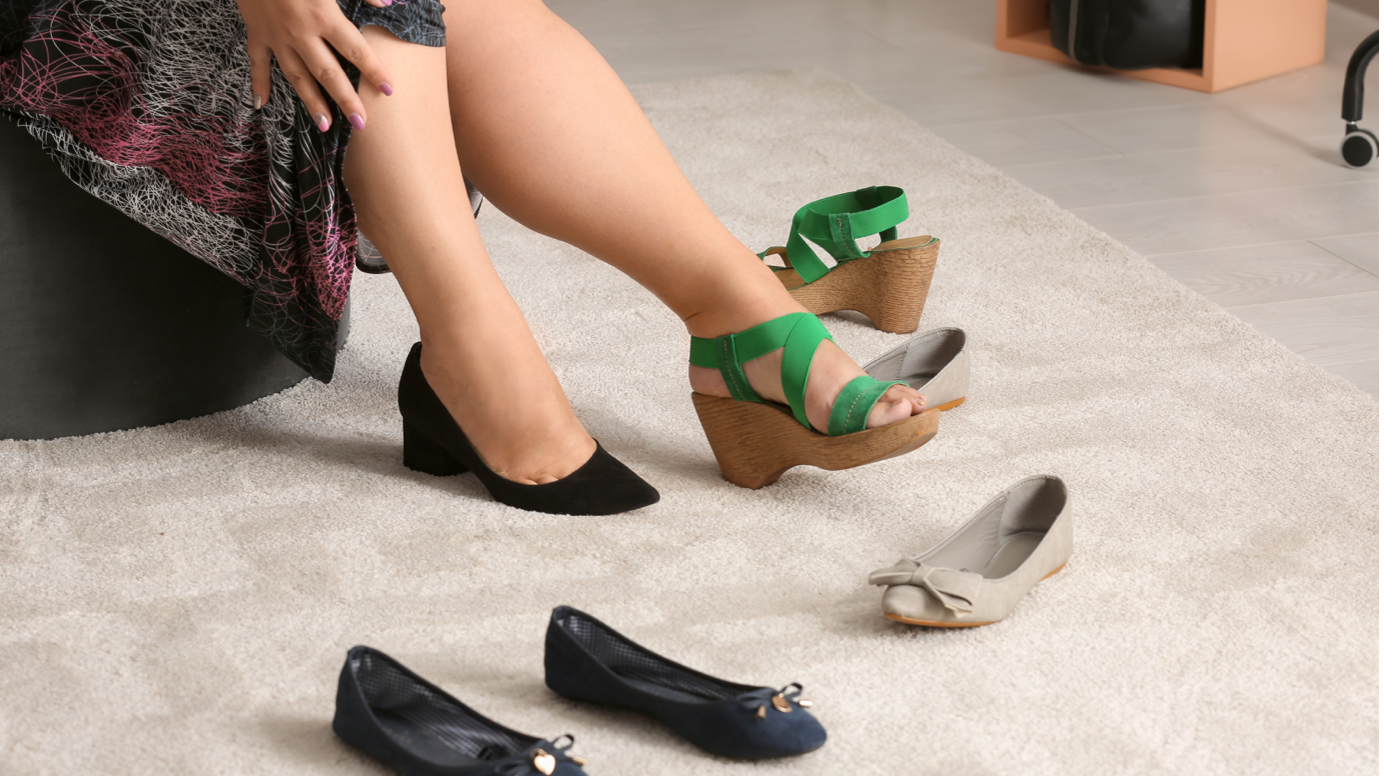
Additional tips for choosing the right shoes
- Shop later in the day
Feet swell throughout the day, so it’s best to try on shoes in the afternoon or evening for a more accurate fit. - Wear the right socks
When trying on shoes, wear the same type of socks you’ll be using with them to ensure the fit is accurate. - Break shoes in gradually
Avoid wearing new shoes for extended periods immediately. Gradually increase the wear time to allow your feet to adjust. - Replace worn-out shoes
Worn soles, flattened cushioning, or damaged uppers can compromise support and comfort. Replace shoes when you notice significant wear. - Consider your activity level
Daily Wear: Look for comfortable, supportive shoes for all-day use. Sports or Running: Choose activity-specific shoes designed to reduce impact and improve performance.
Custom foot scanning and expert advice
To ensure the best fit and support, consider booking a digital foot scan at Essex Footcare. Our foot scanning technology helps identify your foot type, arch height, and pressure distribution, enabling us to recommend the most suitable shoes or orthotics for your needs.
The right shoes can make a significant difference in foot health, preventing discomfort and long-term problems. By understanding what to look for—heel structure, arch support, toe space, and more—you can protect your feet from unnecessary strain and injuries. For personalised advice, expert fittings, and high-quality footwear, book an appointment with us. Let us help you find the perfect pair of shoes to keep your feet happy and healthy!
Advice for choosing slippers
When it comes to selecting the right slippers, comfort, support, and safety should be your top priorities. The right pair of slippers can help prevent foot pain, reduce the risk of falls, and promote better overall foot health. Here are some tips to help you choose the best slippers for your feet.
1. Look for supportive features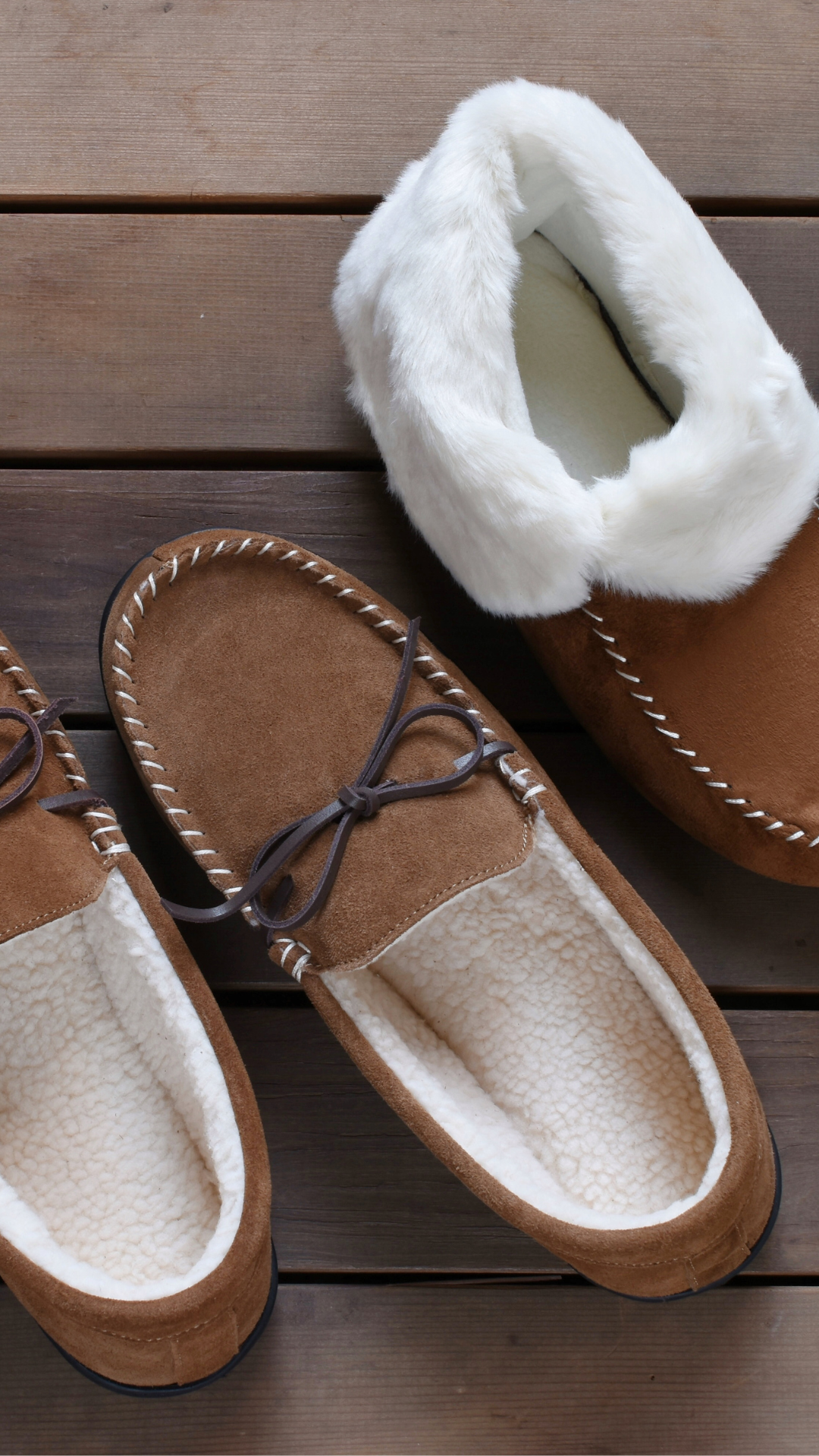
Slippers with proper arch support are essential, especially if you have flat feet or high arches. Look for slippers that provide gentle support to your arches to help distribute your body weight evenly. A cushioned insole will provide comfort and reduce pressure on your feet. Memory foam or padded insoles are excellent choices for comfort and shock absorption. Your slippers should offer adequate support for your heels. A stiffened heel or firm back panel helps keep the heel in place, preventing discomfort and injury.
2. Consider the fit
Ensure that your slippers fit properly. Slippers that are too tight can cause discomfort, while those that are too loose can increase the risk of tripping or slipping. Make sure the slippers have enough room for your toes to wiggle comfortably without feeling cramped. Slippers with adjustable straps, such as Velcro or buckle closures, offer a customisable fit, especially for people with foot conditions or swelling. These can be tightened or loosened for a secure and comfortable fit. If you have wide feet or suffer from bunions, look for slippers with a wider toe box to avoid pressure on sensitive areas.
3. Check for stability and traction
Slippers with non-slip soles are crucial for preventing falls, especially if you have hard floors in your home. Look for soles made from rubber or other non-slip materials that provide traction. A wide and flat sole provides better balance and stability. Avoid slippers with high heels or soles that curve upwards, as they can increase the risk of tripping or instability.
4. Material matters
Choose slippers made from breathable materials, such as cotton, wool, or mesh, to keep your feet cool and dry. Breathable fabrics help reduce foot odor and prevent fungal infections. If you're looking for warm slippers, opt for soft materials like fleece or shearling that provide extra warmth during colder months. However, ensure they are still breathable to avoid moisture buildup.
5. Consider your foot health needs
If you have conditions such as arthritis, plantar fasciitis, or diabetes, look for slippers that provide extra cushioning and support. Orthopedic slippers are designed to address specific foot health needs and can help alleviate pain or discomfort. For seniors or anyone concerned about falls, it’s essential to choose slippers that offer secure support, non-slip soles, and a proper fit. Some slippers are endorsed by fall prevention councils for their added safety features. Take a read of this blog for our essential foot care tips for seniors.
6. Style and versatility 
Consider slippers that can be worn both indoors and outdoors. Slippers with sturdy soles are versatile enough to wear for quick trips outside, such as checking the mail or going to the garden. While comfort and function should be your primary focus, there’s no reason to compromise on style. Choose slippers in a color and design that matches your personal taste, so you feel good wearing them.
7. Get a professional fitting
If you’re unsure about which slippers are best for you, consider visiting a footwear consultant or podiatrist for a professional fitting. A specialist can assess your foot structure and provide recommendations based on your specific needs, such as arch support, foot width, and any existing foot conditions.
Choosing the right slippers is an important step toward maintaining your foot health and overall well-being. Look for slippers that offer support, stability, and comfort to keep your feet happy and safe. If in doubt, don’t hesitate to get fitted by a professional who can help you make the best choice for your feet.
We are here to help diagnose, treat and help you prevent foot conditions if you are concerned by any foot problem, please get in touch.
Your feet will thank you for it!
The photos in the blog are shared by Wider Fit shoes; they have an excellent range of styles to choose from.
Understanding Orthotics
Orthotics are innovative devices designed to support, align, or improve the function of your feet. Ranging from simple over-the-counter shoe inserts to custom-designed devices tailored to individual needs, orthotics play a vital role in enhancing mobility and relieving foot pain. Whether you're dealing with a chronic condition like plantar fasciitis or need additional support for daily activities, orthotics can make a significant difference.
What are orthotics?
Orthotics are foot-support devices made from lightweight materials designed to:
- Improve foot alignment: Correct imbalances and enhance the biomechanics of your feet.
- Provide support: Stabilise joints and provide enhanced arch support.
- Reduce pain and inflammation: Help alleviate discomfort caused by various foot and lower limb conditions.
- Aid in healing: Facilitate recovery from injuries and chronic conditions.
Orthotics can restore your ability to walk, run, and jump with greater ease by improving foot function and reducing unnecessary stress on the feet, ankles, knees, and even hips.

Conditions that benefit from orthotics
Orthotics are highly effective for a wide range of foot-related issues, including:
- Plantar Fasciitis: Provides arch support to reduce strain on the plantar fascia ligament.
- Achilles Tendonitis: Reduces tension on the Achilles tendon by improving foot alignment.
- Morton’s Neuroma: Helps relieve pressure on the nerve between the toes.
- Flat Feet (Fallen Arches): Offers structured support to improve alignment and reduce overpronation.
- High Arches: Provides cushioning to absorb shock and prevent stress on the ball and heel of the foot.
- Arthritis: Reduces joint stress and improves mobility.
- Sports Injuries: Enhances performance and reduces the risk of repetitive strain injuries.
Types of Orthotics
1. Over-the-counter orthotics
- These are pre-made, readily available insoles designed for general use.
- Ideal for minor foot discomfort or short-term support.
- While affordable and easy to find, they lack the customisation needed for specific foot conditions.
2. Custom-made orthotics
- Created using advanced technology, including impressions, casting, and 3D computer modelling.
- Tailored to your unique foot shape and biomechanics.
- Provides precise support and alignment for specific conditions or injuries.
- Recommended for individuals with chronic foot pain, abnormal gait, or complex conditions like bunions or diabetic neuropathy.
How orthotics improve quality of life
Orthotics not only address specific foot conditions but also contribute to overall well-being by:
- Reducing pain: Eases discomfort in the feet, knees, hips, and lower back caused by poor alignment.
- Enhancing mobility: Improves walking and running efficiency.
- Preventing injuries: Reduces the risk of repetitive strain injuries and stress fractures.
- Improving sporting performance: Provides the support and cushioning needed for high-impact activities.

Tips for using orthotics effectively
- Break them in gradually: Wear your orthotics for a few hours each day initially to allow your feet to adjust.
- Wear appropriate shoes: Ensure your shoes have enough space and support to accommodate orthotics.
- Follow podiatrist advice: Regular check-ins with your podiatrist can help fine-tune your orthotics and address any concerns.
- Replace when necessary: Orthotics typically last 1-2 years, depending on use and materials. Replace them when signs of wear appear.
Orthotics are a powerful tool for improving foot health, enhancing mobility, and relieving pain. Whether you need simple orthotics or custom-designed devices, they can provide the support and alignment required to address a wide range of foot conditions.
For expert guidance, biomechanical assessments, and access to premium orthotic solutions, visit us at Essex Footcare. Our team is dedicated to helping you find the perfect fit for your needs, ensuring comfort and relief every step of the way.
For comfort and foot health, your shoes must fit your feet correctly. Comfortable shoes will allow your feet to work normally and will not restrict their movement in any way.
While the size of the shoe you buy is important, it’s also a good idea to check the following shoe fitting points to make sure that the shoe will be comfortable when you go walking:
Tips for Proper Shoe Fit
1. Toe Space
Make sure there’s 1/2 inch (1cm) of space between your longest toe and the end of the shoe – this can easily be checked by pressing the upper to locate the position of your toes.
Also, check there’s enough room for your toes to wiggle in the shoe.
2. Width
There should be enough width in the shoe to accommodate your whole foot – there should be no pressure on the joints on the sides of your foot.
3. Heel Slippage
For comfort, shoes shouldn’t slip at the back.
If the shoe slips when you walk, push your heel to the back of the shoe, then try altering the laces or straps to improve the fit against your foot.
What Size do I Need?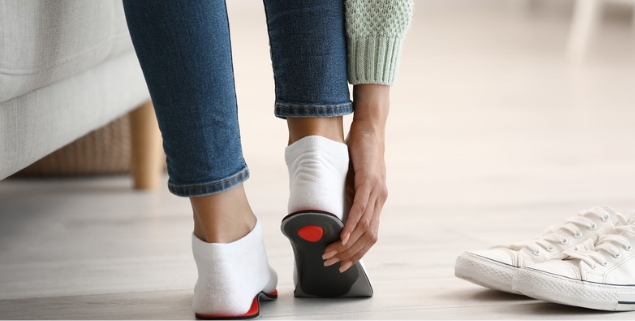
Many people believe that their feet stay the same size throughout their lives.
However, feet tend to increase in both length and width, so it’s important to use the points above to check whether the fit is correct.
Also, shoe sizing can vary tremendously between brands, so it’s important to ensure shoes fit correctly, rather than relying on the size alone.
Choosing the Best Shoes
When it comes to selecting shoes for any occasion, we’d encourage you to consider the following factors:
1. Fit
Shoes should feel comfortable from the moment you try them on. If they feel too tight or too loose, they're likely not the right fit.
2. Purpose
Match the shoe to the activity. Athletic shoes are designed for sports, while dress shoes are ideal for formal events.
3. Quality
Investing in well-made shoes ensures durability and proper foot support, reducing the risk of foot problems.
More Tips from Essex Foot Care
Properly fitting shoes are essential to foot health. Essex Foot Care offers these additional fitting tips:
- Measure Both Feet: Feet can vary in size, so measure both and go with the larger size.
- Try Shoes Later in the Day: Feet tend to swell throughout the day, so try shoes on in the afternoon or evening for a more accurate fit.
- Wiggle Room: There should be about a half-inch of space between the longest toe and the end of the shoe to prevent cramping.
- Walk Around: Take a few steps in the shoes to ensure they don't slip or rub uncomfortably.
Remember, your shoes should look good and support your feet throughout the day. Whether exploring Essex or enjoying a quiet night in, the right shoes can make all the difference.
Our experts are happy to advise what you must look out for when investing in footwear. We are here to help and encourage you to find the perfect fit for your lifestyle and foot health needs.
For more in-depth information on choosing the right shoes for every occasion, we invite you to read our blog post: The Complete Guide to Footwear: Choosing the Right Shoes for Every Occasion
Feel free to discuss any of these points with us at your next appointment for further advice on keeping your feet healthy and comfortable.


